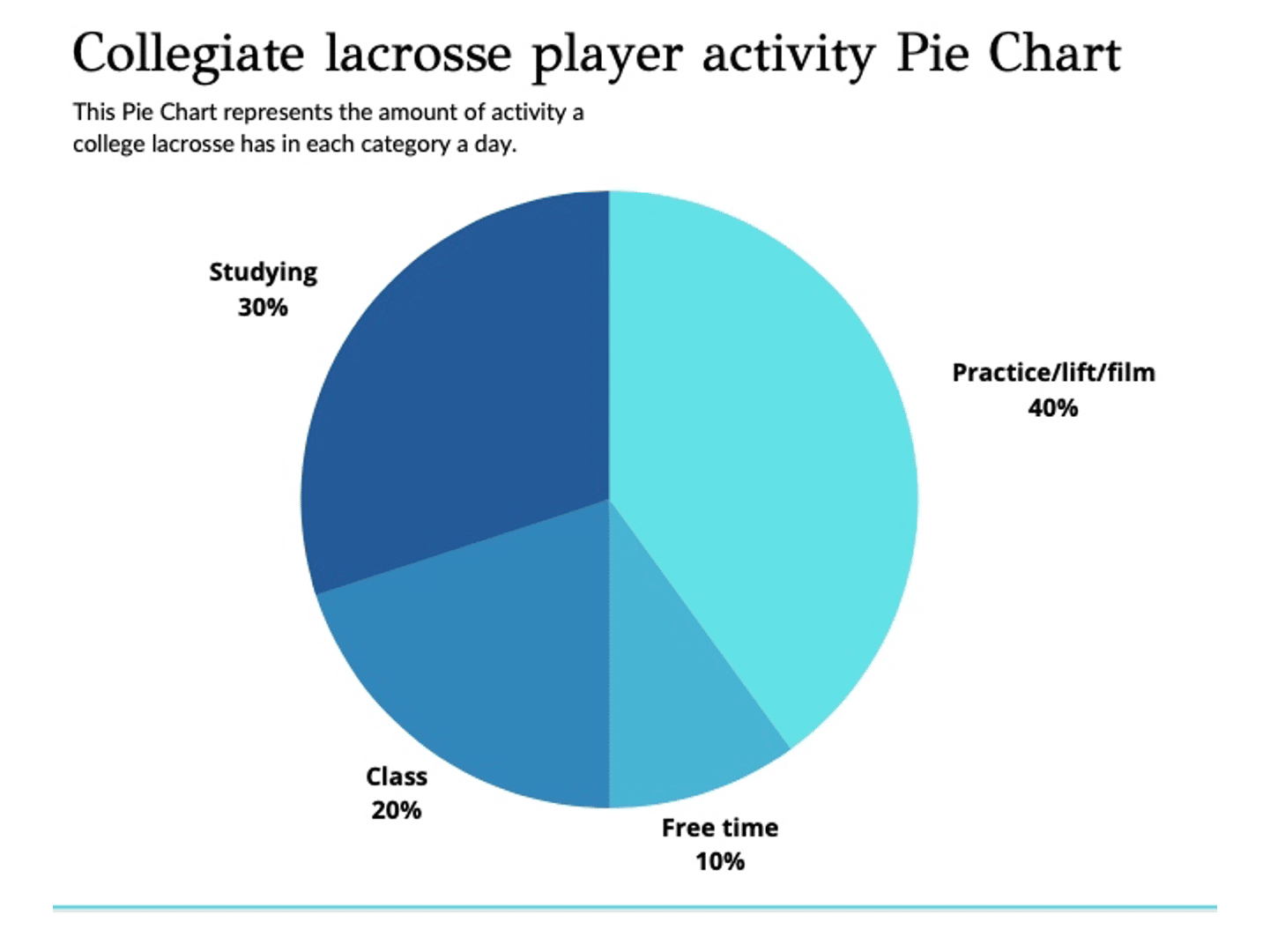
College athletes train year round to become champions
Graphic courtesy Jacob Collins
By Jacob Collins, contributing writer
Cheering fans, team comradery, fist pumps, celebratory wins, moments of greatness, coach accolades and campus recognition. Such alluring reasons to be a collegiate athlete.
Those are the definite upsides of being a college athlete. However, the very reasons athletes are drawn to play their sport in college represents just a minimal part of the experience. It makes you wonder, if athletes knew then what they know now, would they still strive to play at the college level?
The average college coed simply attends classes and has ample time to complete assignments, study for exams and finish projects. And they would attest that being a full-time student is stressful. Add to that the demands of playing a college sport. Most athletes who have dreams of playing in college have no idea just what is in store for them.
Although each sport has a designated season, for example lacrosse players’ season is in the spring, there is no rest for the weary during the off season. Ultimately, the entire time athletes attend college during the academic school year, their athletic responsibilities never cease. The only time athletes have any reprieve is when they are not on campus, during breaks and summers. Yet even during the summer, coaches provide their athletes with workout regiments, book studies and athlete check-ins via Zoom team meetings, etc. The commitment athletes make as high schoolers, in the form of accepting scholarship money to play a sport, is far greater than expected. For some, the disillusion is too much.
To the surprise of new university freshmen lacrosse commits, being expected to begin intense training immediately upon arriving on campus is daunting. Despite the official season not starting until January, all players have agreed, maybe unknowingly, to work hard all year.
Whole team weight training begins immediately, typically three days a week for an hour. This includes heavy lifting, working on all muscle groups. Another part of weight training is called maxing out in the weight room, which consists of achieving the most amount of weight a player can bench (chest), squat (legs) and dead lift (core/legs). These weight training sessions are very intense. Maxing out usually occurs at the end of the semester in the fall, but throughout the fall season players are increasing their weight limits each session. This is, in part, is due to the strength coach screaming in players’ faces to ensure they are working to their highest potential.
A major part of the off season is conditioning. This is a huge factor in the fall as it gets players in shape. Players must participate in timed sprints and must continue to complete the sprints until the target time is met. Additionally, players’ stamina is increased by running far distances at practice, again meeting targeted times.
Off season practices are very intense since there aren’t any games. Skills are being practiced at the highest level possible. Players practice, which may begin as early as 5 AM, and then condition after practice. This helps players get into the best shape possible and ready for the season. Thomas Cecere, NGU lacrosse captain, says, “At NGU, we practice at 5 AM, two to three times a week. Then we’ll have afternoon practices.” Cecere continues, “My day starts with practice from 5:30 AM to 7:30 AM. Then, I head to class from 9:00-10:00 AM, which is followed by chapel. After chapel, I’ll eat lunch and go to lift. After that, I’ll go back to class and do homework, trying to be in bed by 10:00 PM.”
Yearlong nutrition is key in order to maintain game-ready shape and the ability to recover properly (from intense workouts/injury). All year, players are expected to follow a nutritional diet throughout the week and be mindful of what they eat, including foods rich in protein and carbohydrates. Ethan Pattinson, a Bellarmine University lacrosse senior, says, “I’d say everyone on the team adheres to a good, balanced diet because everyone wants to maintain being in shape, and with all the running we do, it’s important to eat food that will benefit us on the field.”
Scrimmages vary throughout the fall semester. Cecere says, “NGU scrimmaged Limestone University, Lincoln Memorial and Newberry College.” Scrimmages help the coaches and players evaluate the team dynamic, assess new plays and determine team/player line-ups. By the time in-season begins, the team can execute plays, accept and understand one’s role/position and prove readiness for conference play.
In-season (spring) is truly what first-year lacrosse players believe they signed up for and soon realize they’ve been naïve about their new reality. No new player truly grasps the demanding grind of the in-season. Practices are six days a week, depending on if there’s a game; practices do tend to be lighter, physically, but more time consuming and often include time for reviewing plays and game drills. As well, practice time is spent reviewing film -both to analyze past performance strengths and weaknesses and to prepare for upcoming games by scouting the competition.
Another big obstacle is travel and team meals (before home games). Players must juggle the demands of school work with the demands of team travel and often miss class instruction, opportunities to complete assignments/projects and time to prepare for tests. Pattinson says, “During the season, I try to use my time wisely -balancing school and lacrosse – because it gets very busy. Basically, I’m either studying or watching film and getting ready for our next opponent.”
The in-season definitely takes its toll. Injuries plague teams where physical contact and endurance is necessary. Therefore, many players struggle to stay healthy for an entire season. If a player suffers an injury, even more time is needed to rehabilitate while still attending practices and games. Justin Collins, an injured NGU player, suffered three injuries requiring three surgeries throughout his collegiate lacrosse career, stated, “Players must accept that not only might they suffer an injury, but the injury may potentially be career ending.” He sat out his entire senior season, fearing reinjury would cause permanent damage.
Playing at the collegiate level is not for everyone, and many athletes cannot maintain the demands of both school and sport. Yet for those who keep fighting, keep playing, even when things get tough, so much is gained. Although college classes prepare students for an academic future, it’s being a part of a college team that prepares student athletes for a professional future. Collegiate athletes a
re proud people. Proud of themselves for accomplishing what, at times, feels impossible and proud to represent the college who took a chance on them.

